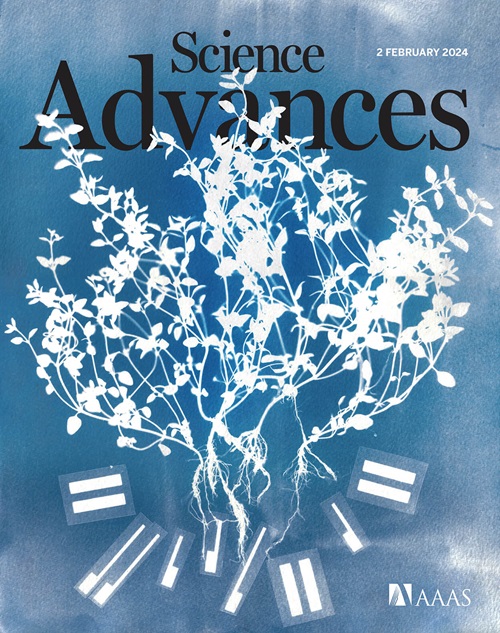Image-guided targeting of mitochondrial metabolism sensitizes pediatric malignant rhabdoid tumors to low-dose radiotherapy
IF 11.7
1区 综合性期刊
Q1 MULTIDISCIPLINARY SCIENCES
引用次数: 0
Abstract
Tumor hypoxia leads to radioresistance and markedly worse clinical outcomes for pediatric malignant rhabdoid tumors (MRTs). Our transcriptomics and bioenergetic profiling data reveal that mitochondrial oxidative phosphorylation is a metabolic vulnerability of MRT and can be exploited to overcome consumptive hypoxia by repurposing an FDA-approved antimalarial drug, atovaquone (AVO). We then establish the utility of oxygen-enhanced-multispectral optoacoustic tomography, a label-free, ionizing radiation-free imaging modality, to visualize and quantify spatiotemporal changes in tumor hypoxia in response to AVO. We show a potent but transient increase in tumor oxygenation upon AVO treatment that results in complete elimination of tumors in all tested mice when combined with 10-gray radiotherapy, a dose several times lower than the current clinic standard. Last, we use translational mathematical modeling for systematic evaluation of dosing regimens, administration timing, and therapeutic synergy in a virtual patient cohort. Together, our work establishes a framework for safe and pediatric patient-friendly image-guided metabolic radiosensitization of rhabdoid tumors.
图像引导的线粒体代谢靶向使儿童恶性横纹肌样肿瘤对低剂量放疗敏感
肿瘤缺氧导致儿童恶性横纹肌样肿瘤(MRTs)的放射抵抗和明显恶化的临床结果。我们的转录组学和生物能量分析数据显示,线粒体氧化磷酸化是MRT的代谢脆弱性,可以通过重新利用fda批准的抗疟疾药物阿托伐醌(AVO)来克服消耗性缺氧。然后,我们建立了氧增强多光谱光声断层扫描的实用性,这是一种无标记、无电离辐射的成像方式,可以可视化和量化肿瘤缺氧对AVO响应的时空变化。我们发现,在AVO治疗后,肿瘤氧合有一种有效但短暂的增加,在所有受试小鼠中,当与10-gray放射治疗联合使用时,肿瘤完全消除,剂量比目前的临床标准低几倍。最后,我们在虚拟患者队列中使用转化数学模型对给药方案、给药时间和治疗协同作用进行系统评估。总之,我们的工作建立了一个安全和儿童患者友好的图像引导下横纹肌样肿瘤代谢放射增敏的框架。
本文章由计算机程序翻译,如有差异,请以英文原文为准。
求助全文
约1分钟内获得全文
求助全文
来源期刊

Science Advances
综合性期刊-综合性期刊
CiteScore
21.40
自引率
1.50%
发文量
1937
审稿时长
29 weeks
期刊介绍:
Science Advances, an open-access journal by AAAS, publishes impactful research in diverse scientific areas. It aims for fair, fast, and expert peer review, providing freely accessible research to readers. Led by distinguished scientists, the journal supports AAAS's mission by extending Science magazine's capacity to identify and promote significant advances. Evolving digital publishing technologies play a crucial role in advancing AAAS's global mission for science communication and benefitting humankind.
 求助内容:
求助内容: 应助结果提醒方式:
应助结果提醒方式:


